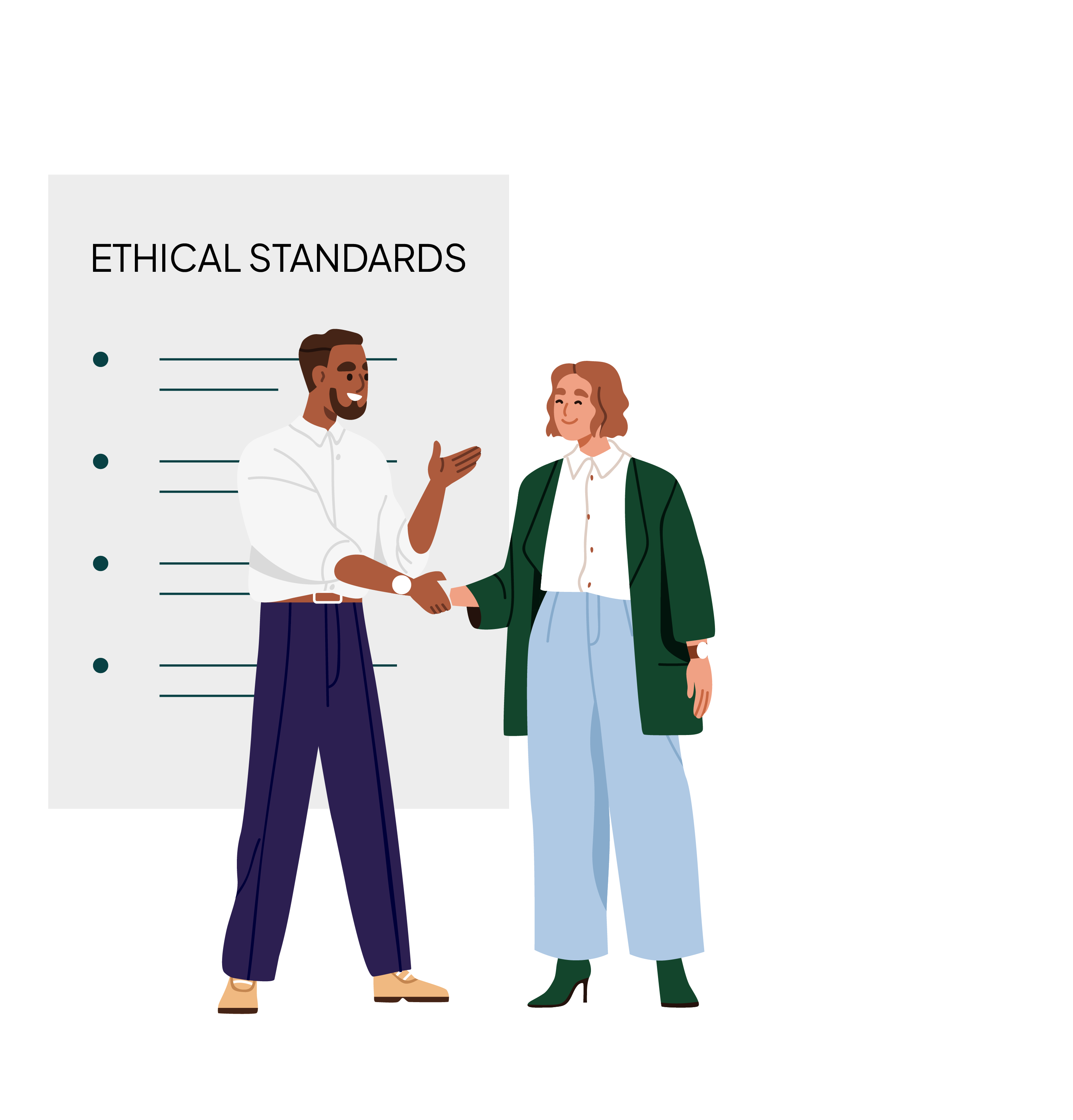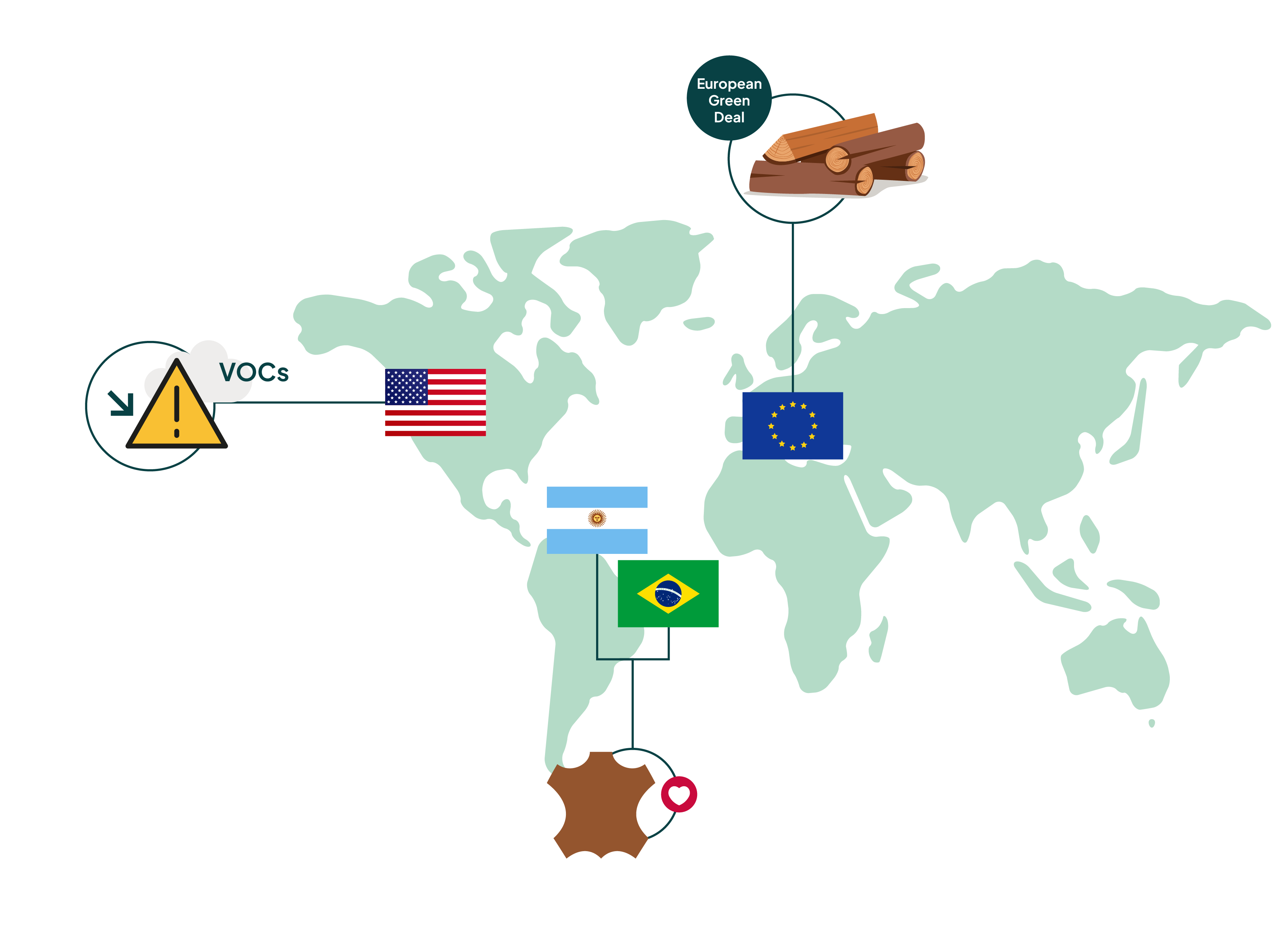Sustainable upholstery furniture: what strategies and technologies?
Key takeways
- current state of sustainability practices in the upholstery industry
- challenges companies face in achieving their sustainability objectives
- technology available to overcome these challenges

Introduction to sustainability
Sustainability has emerged as a critical focus across various industries, particularly in the furniture sector. In the realm of upholstered furniture, sustainability refers to minimizing environmental, health, and social impacts throughout the product lifecycle. According to the Sustainable Furnishings Council (SFC), this approach prioritizes the long-term well-being of the planet and its inhabitants over short-term gains.

Good design is long-lasting and environmentally friendly.
Dieter Rams
The upholstered furniture industry is increasingly recognizing the importance of integrating sustainable practices into its operations. A survey conducted by the Center for Industrial Studies (CSIL) found that 45% of manufacturers cited "environmental sustainability" as a top priority in their business strategies. However, despite acknowledging the importance of sustainability, many manufacturers rated their industry's efforts as lacking, with an average sustainability grade of "C."
Core components of sustainability
Sustainability in the upholstered furniture sector is driven by several key components aimed at reducing environmental and social impacts across the product lifecycle. These components include:
- Eco-friendly Manufacturing Practices: The promotion of sustainable manufacturing practices is central to creating eco-friendly home furnishings. This involves adopting processes that reduce waste, energy consumption, and harmful emissions.
- Material Health: Ensuring the use of non-toxic, safe materials throughout the product's construction is vital. Regulatory frameworks, such as California's Proposition 65, have influenced industry practices by requiring manufacturers to disclose harmful chemicals in their products.
- Environmental Impact: The environmental impact of furniture manufacturing extends beyond emissions and toxic chemicals. It significantly affects natural resources, such as water, and contributes to climate change through deforestation and carbon emissions.
- Social Responsibility: Given the global nature of the supply chain, social responsibility is crucial. Many upholstered furniture products are sourced from countries with less stringent labor standards, raising concerns about worker safety and fair wages.

Challenges of sustainability
Despite the growing emphasis on sustainability, the upholstered furniture industry faces significant challenges:

- Recyclability Concerns: Upholstered furniture is notoriously difficult to recycle due to its composite materials. The mixture of wood, metal, foam, fabric, and adhesives complicates the recycling process, resulting in many pieces ending up in landfills.
- Costs of Sustainability: Incorporating sustainable practices into production can be expensive. Sourcing eco-friendly materials and implementing sustainable manufacturing processes often leads to increased costs, which can be prohibitive for smaller manufacturers.
- Uneven Playing Field: Sustainability standards and regulations vary widely across regions, creating an uneven playing field for manufacturers. Companies in regions with strict regulations face higher compliance costs, while those in less regulated areas may continue using cheaper, non-sustainable materials.
- Labor Shortages: The industry is grappling with labor shortages, particularly skilled artisans capable of working with eco-friendly materials and techniques. This shortage is exacerbated by an aging workforce and limited access to training programs.
Strategies for enhancing sustainability
To advance sustainability in the upholstered furniture industry, companies can implement several key strategies:
- Education and Consumer Awareness: Educating consumers about sustainable furniture options is vital for driving demand and encouraging responsible purchasing decisions. Many consumers are unaware of the environmental impact of their furniture choices.
- Regulations and Recognized Sustainability Certifications: Governments worldwide are increasingly focusing on sustainable materials and processes. By proactively adopting these regulations, companies can reduce regulatory risks and enhance brand loyalty.
- Better Use of Industry 4.0 Technologies: Leveraging advanced technologies such as robotics, artificial intelligence, and the Internet of Things can optimize production processes and reduce waste. For example, identifying fabric defects before cutting can minimize material waste.

Brands no longer need to choose between sustainability and economic growth - both can coexist and fuel each other.
Steve Kooy, Health & Sustainability Director at BIFMA
Global perspectives on sustainability
Sustainability practices in upholstery manufacturing vary significantly across different regions, influenced by local regulations, consumer preferences, and economic factors:

- Europe: European countries have been at the forefront of sustainability efforts, implementing strict regulations and standards aimed at reducing environmental impact. Policies like the European Green Deal promote recycling and sustainable sourcing.
- Asia: In countries like China and Vietnam, which are major manufacturing hubs, sustainability practices are evolving. While larger companies are beginning to adopt sustainable measures, smaller manufacturers often prioritize cost-efficiency over environmental considerations.
- United States: In the U.S., sustainability in upholstery manufacturing has gained momentum, but the pace varies across the industry. Larger companies and luxury brands tend to lead the way, emphasizing eco-friendly materials and processes.
- South America: Countries like Brazil and Argentina are significant sources of leather, which raises sustainability concerns due to its environmental impact. The debate centers around whether leather can be considered sustainable given its ties to the cattle industry.
Emerging business models
One of the most promising trends in the upholstered furniture industry is the rise of circular economy initiatives. This model focuses on designing furniture to be easily disassembled and recycled, extending the product lifecycle through recycling, remanufacturing, and upcycling.
Additionally, leasing programs, or the Furniture-as-a-Service (FaaS) model, are gaining traction. Instead of selling furniture outright, companies lease their products to consumers, who can return them after a set period. This model reduces waste and promotes more sustainable resource use.
Conclusion
The journey toward full sustainability in the upholstered furniture industry is challenging, yet filled with immense potential. The increasing emphasis on circular economy models, advancements in manufacturing technologies, and growing consumer demand for eco-friendly products position the industry to make substantial progress.
As companies continue to adapt and evolve, those prioritizing sustainable practices are expected to gain a competitive edge, build stronger customer loyalty, and contribute positively to the environment. While the transition may be gradual, the collective efforts of manufacturers, policymakers, and consumers hold the promise of a more sustainable future for the global furniture market.
Sources and contributors
Lectra would like to express its appreciation and thanks to the panel of international furniture industry experts and specialists, each offering their unique views and experiences on the challenges and opportunities in the market.
Contributors include:
- David Pambianco, CEO of Pambianco Strategia di Impresa;
- Nicola Coropulis, CEO of Poltrona Frau;
- Cindy Hodnett, executive editor for leading industry media company Bridge Tower Media;
- Ovidijus Jalonskis, CEO of Vilmers;
- Pan Chaoping, Lean Production and Planning Management Director ;
- Tu Jiahui, Director of Product Development, for Kuka Home;
- Steve Kooy, Technical Director Health and Sustainability from Bifma;
- and Clémentine Mitard Manteau, product marketing director at Lectra.
Sources include :
- CSIL survey among upholstered producers, 2021
- www.furnituretoday.com
- www.architecturaldigest.com
- www.eeb.org
- www.statista.com
- www1.eere.energy.gov
- www.forbes.fr


